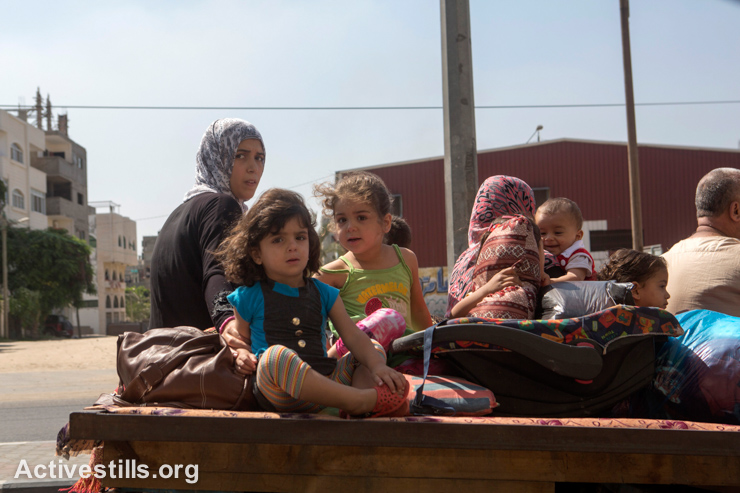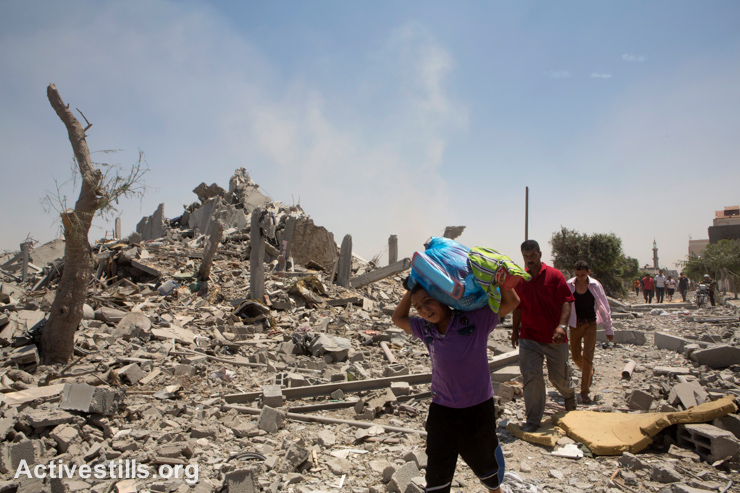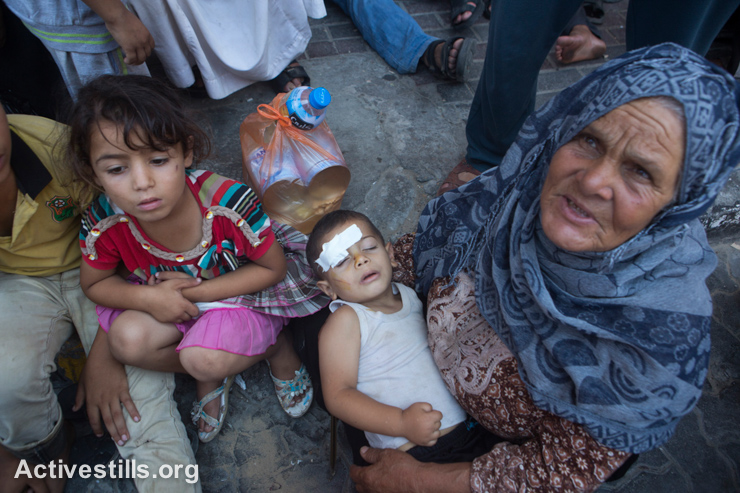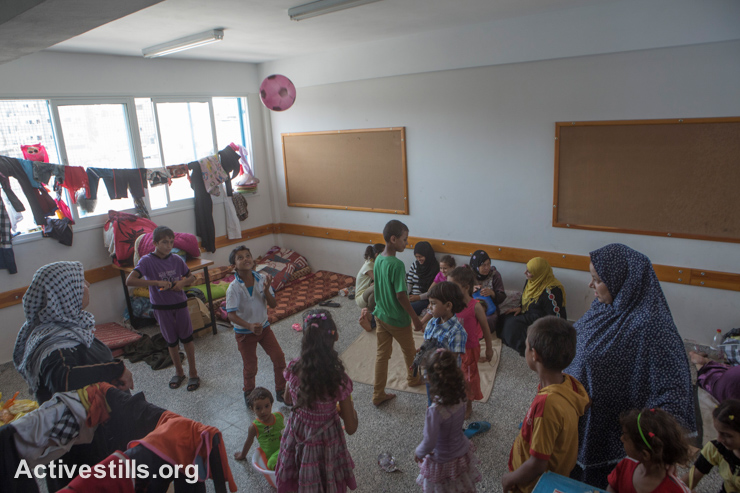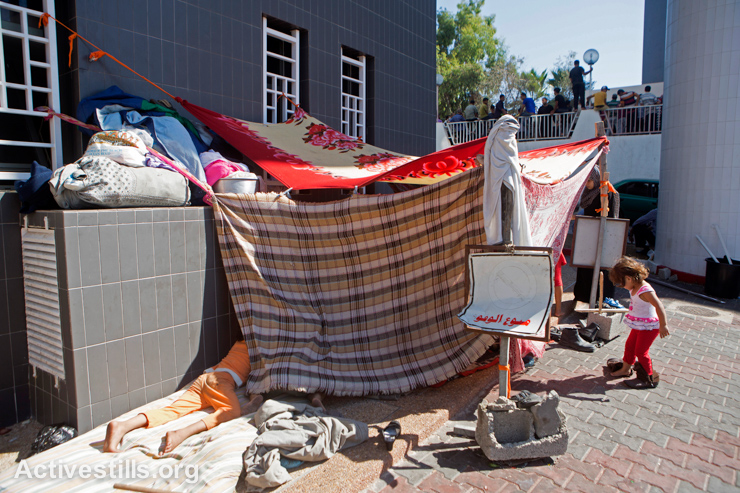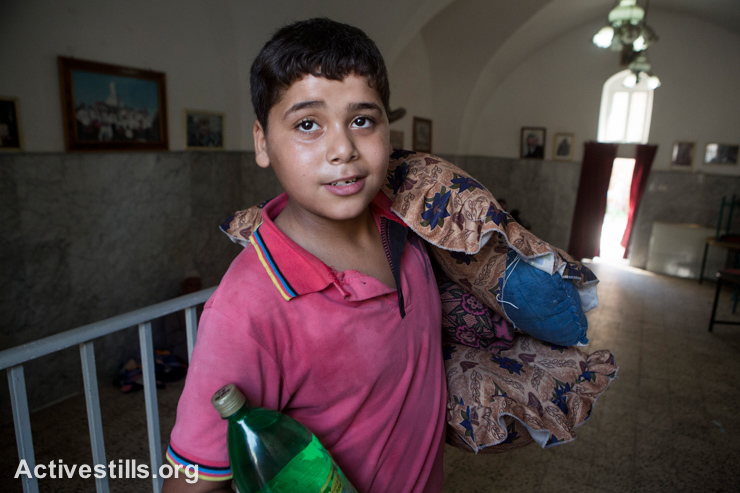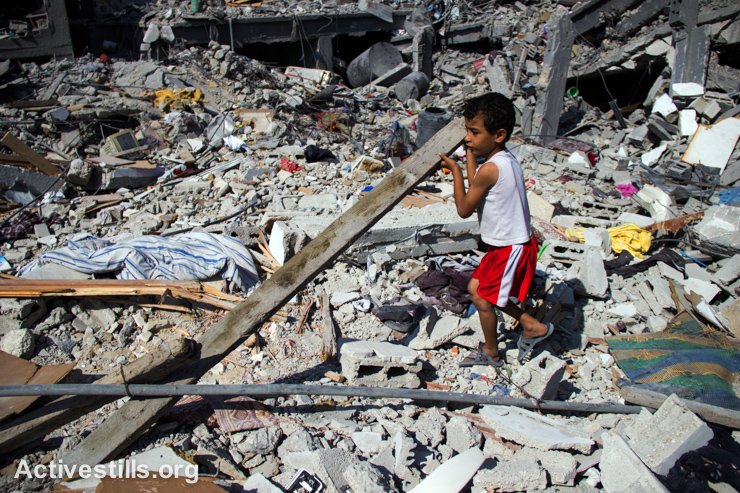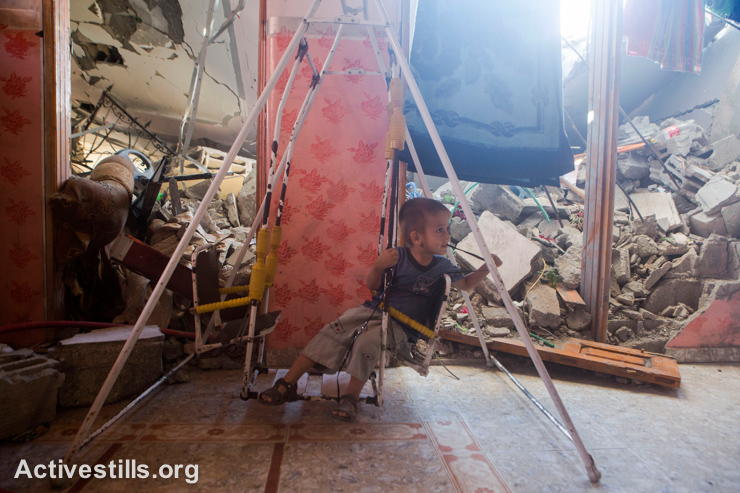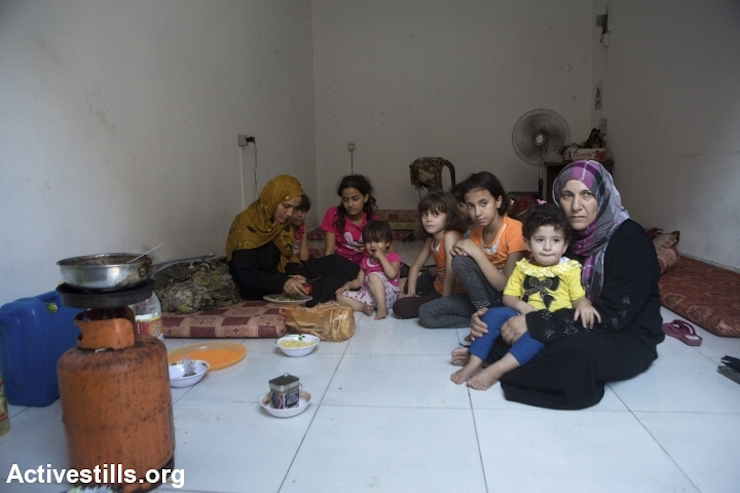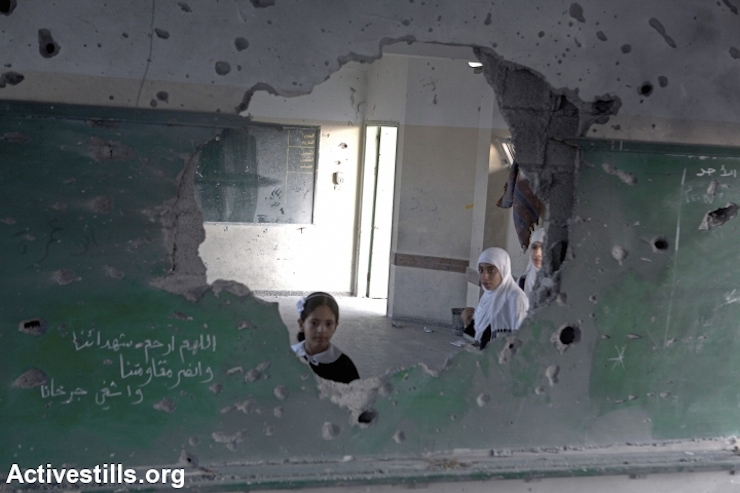Israel’s latest offensive on the Gaza Strip killed more than 500 children. Those who survive must endure ongoing trauma and displacement.
Photos by Anne Paq and Basel Yazouri/Activestills.org
Text by Anne Paq
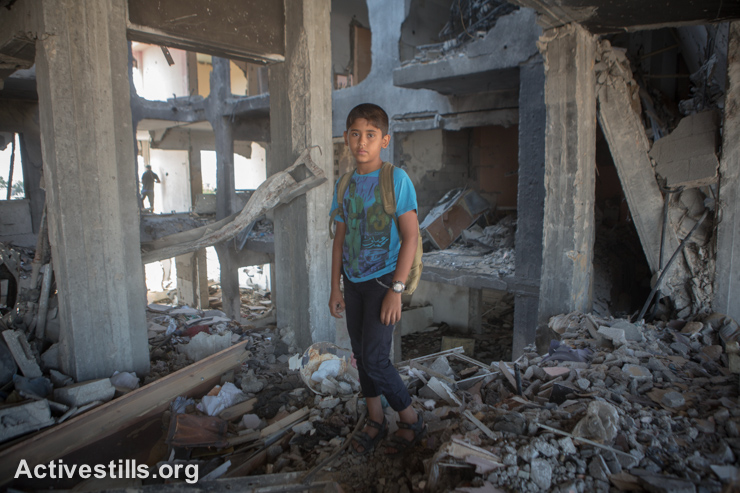
I visited Al Nada towers in Beit Hanoun in the northern Gaza Strip after they were destroyed by Israeli strikes. The towers had 90 apartments, home to many families. Mohammed, an 11-year-old child, was sitting on top of rubble, waiting to go to school. As I was working on a series of images of destroyed bedrooms, I asked him to bring me to his home to show me his room. We climbed together over more rubble to access the second floor of the tower. Almost nothing remained of his room. It was completely burned and the walls had been blown off. Mohammed told me what he misses the most is “everything” — but especially his computer and his books. Since that encounter, I keep asking myself: what will Mohammed’s view of the world be after his little universe was destroyed this summer? A home can be rebuilt, but what about the psychological impact on his generation?
In Gaza, where the population is very young (over 60 percent of Gazans are under the age of 25), children are everywhere — and they are also the most vulnerable in conflict. Stuck in Gaza, these children only know the occupation and many have already witnessed several Israeli military operations. The latest Israeli offensive, named Operation Protective Edge, lasted for seven weeks and killed more than 500 children. More than 3,000 were injured, and 1,500 lost at least one parent. Most are traumatized. According to the UN, 373,000 children in Gaza are in immediate need of psychological assistance.
Their feeling of insecurity has worsened as many children lost what they consider to be their safe haven: their homes. More than 18,000 housing units were destroyed in the war, leaving 108,000 people homeless. The majority of them are children. The number of Palestinians who fled their homes was the largest seen since 1967. Nearly a third of the population of Gaza, about 500,000 people, were displaced by the offensive.
Displaced families have been crammed into UN schools in very difficult living conditions. Some children also had to sleep in parks, shops, or with relatives. Today, despite a long-term truce, there are still 50,000 Palestinians who remain living in schools. Many cannot live in their houses, which have been either partially or fully destroyed, and help to rebuild is slow to come. Some families have returned to their half-destroyed homes, despite having no running water or electricity. With the winter and the first heavy rains expected within the next two months, it is likely that some of these buildings will collapse and become completely unlivable.
According to the UN, 22 schools were completely destroyed and 118 damaged. Despite a three-week delay, there was a tremendous effort to open the schools as soon as possible so that the children could go back to studying. The classes first focused on recreational and therapeutic activities so that the children can express their feelings after having undergone such traumatic period. Many parents wanted their children to return to school in order to regain some sense of normalcy and routine. But the concept of normalcy remains quite relative for Palestinians who have lived in Gaza under a tight Israeli blockade since 2007. How can we expect these children to grow up normally and look to the future with hope when they are the witnesses and victims of this level of violence? A whole generation of children now live with the trauma of war and fear of further shelling.
An evaluation by the United Nations and humanitarian organizations estimated it will take at least 20 years under the import restrictions currently imposed by Israel to rebuild the Gaza Strip. But how long it will take these children to overcome their trauma? When will they finally live free from the fear of occupation and future Israeli attacks?
